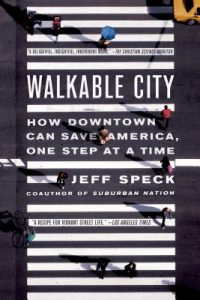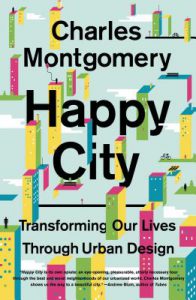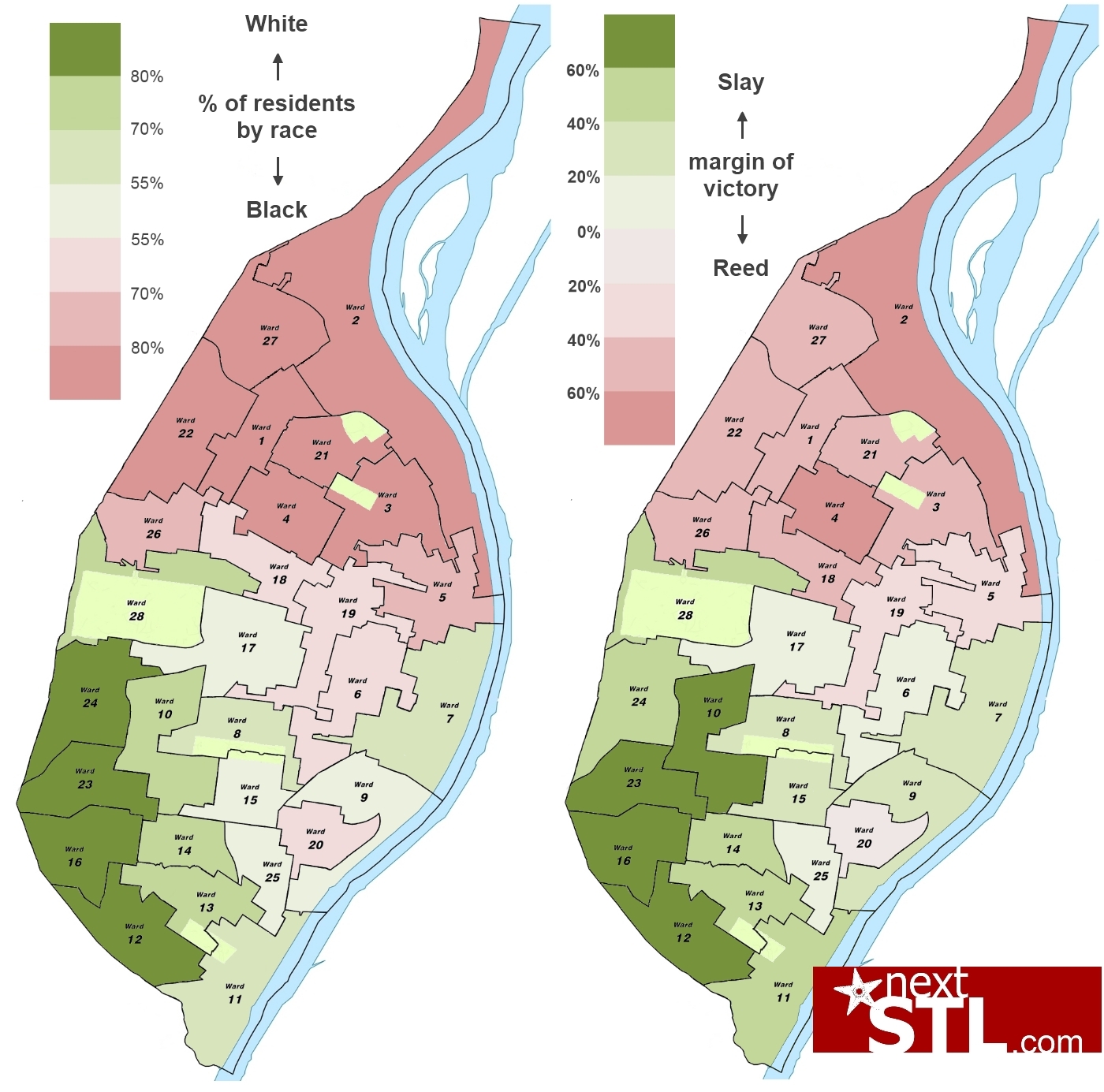Author's posts
Feb 02
$150,000 Permit Issued for Dark Room at Grandel Theatre
A $150,000 permit has been issued for The Dark Room’s new space in the Grandel Theatre in the Grand Center Arts District (Grand Center neighborhood).
Feb 02
$290,000 Permit Issued for “Gift Shop” at Bowood Farms in CWE
It appears Bowood Farms is set to expand it’s growing footprint across Olive Street. The popular plant nursery, restaurant, and retail shop has been issued a $290,000 permit for a “gift shop” in the vacant building at 4600 Olive Street in the city’s Central West End neighborhood.
Feb 01
Saint Louis City 2016 General Election Results by Ward
As we gear up for the city’s next primary for mayor and aldermen, here’s a look at how city voters performed in the November 2016 general election. While local offices are unfortunately largely determined by the result of the Democratic primary, thus resulting is abysmally low turnout, a broader look at the city’s electorate can be informative.
Maps were produced by Paul Fehler, 8th Ward Democratic Committeeman. Below the general election maps are the nextSTL maps detailing results from the previous Democratic mayoral primary with results for Mayor Francis Slay and President of the Board of Aldermen, Lewis Reed.
_______________________________________
Understanding St. Louis: Democratic Mayoral Primary Results – 2013
Jan 23
100 Apartments, Retail, Planned for 6300 Clayton Avenue in Dogtown

A proposal for the long-vacant lumber yard would bring 100 market-rate apartments and 15,000 sf of retail space to the center of the city’s Dogtown neighborhood. The $20M proposal by Pearl Companies of Indianapolis appears similar to its Trail Side project along the Cultural Trail in that city.
The Pearl project attempts to address parking concerns with 123 underground spaces to serve the 89 1BD and 11 2BD units. Proposed commercial is shown as an 11K sf and 4,500sf spaces fronting Clayton Avenue. At five stories, the project will require a variance to proceed. A half-block on either side of the site (Google Maps) sits a four-story mixed-use infill project and a five-story parking garage now owned by the St. Louis Zoo.
In St. Louis, this means the developer will seek the endorsement of the neighborhood association and alderman. Although a 2013 proposal for 63 apartments on the site was approved by the neighborhood, conditions placed on the project regarding parking and building materials led the developer to choose not to proceed.
The new proposal will be presented to the Clayton-Tamm Community Association January 26. Pearl Companies has the site under contract and will be seeking support for tax abatement as well.









 {Trail Side in Indianapolis by Pearl Companies – 69 apartments over parking, with 20K sf of retail space fronting the Indianapolis Cultural Trail}
{Trail Side in Indianapolis by Pearl Companies – 69 apartments over parking, with 20K sf of retail space fronting the Indianapolis Cultural Trail}
The 2013 proposal for 6300 Clayton Avenue:
Jan 17
A Reading List for St. Louis City Candidates for Mayor by Left Bank Books and nextSTL
At nextSTL, we’re always looking for new, different, and informative ways to explore a particular issue or topic. This spring, perhaps no single issue is more important to the future of St. Louis than the election of a new mayor for the first time in 16 years.
With support from Left Bank Books and Patrick McEvoy (Twitter: @pat_mcevoy), we’re doing more than simply listing books to read, we’re presenting leading candidates for mayor with copies of four books we believe are essential to understanding our city and making St. Louis a greater place to live, work, and visit. In the coming days and weeks we’ll reach out to candidates, invite them to join us on the Future Great City podcast and deliver this reading list to them.
We believe that our elected leaders lead best when best informed about urban issues from transportation to livability to small business economics. Our hope is that candidates see their role as community builders beyond the politics of scarcity that continues to confound the city. While we will continue to seek context, track development, and share ideas, each of the books below contains more wisdom and knowledge that we can possibly hope to impart on nextSTL.
The Left Bank Books / nextSTL St. Louis City mayoral candidate reading list:
 Death and Life of Great American Cities by Jane Jacobs
Death and Life of Great American Cities by Jane Jacobs
A direct and fundamentally optimistic indictment of the short-sightedness and intellectual arrogance that has characterized much of urban planning in this century, The Death and Life of Great American Cities has, since its first publication in 1961, become the standard against which all endeavors in that field are measured.
 Walkable City: How Downtown Can Save America, One Step at a Time by Jeff Speck
Walkable City: How Downtown Can Save America, One Step at a Time by Jeff Speck
Jeff Speck has dedicated his career to determining what makes cities thrive. And he has boiled it down to one key factor: walkability. The very idea of a modern metropolis evokes visions of bustling sidewalks, vital mass transit, and a vibrant, pedestrian-friendly urban core. But in the typical American city, the car is still king, and downtown is a place that’s easy to drive to but often not worth arriving at.
 Big-Box Swindle: The True Cost of Mega-Retailers and the Fight for America’s Independent Businesses by Stacy Mitchell
Big-Box Swindle: The True Cost of Mega-Retailers and the Fight for America’s Independent Businesses by Stacy Mitchell
In less than two decades, large retail chains have become the most powerful corporations in America. Stacy Mitchell illustrates how mega-retailers are fueling many of our most pressing problems, from the shrinking middle class to rising pollution and diminished civic engagement and she shows how a growing number of communities and independent businesses are effectively fighting back.
 Happy City: Transforming Our Lives Through Urban Design by Charles Montgomery
Happy City: Transforming Our Lives Through Urban Design by Charles Montgomery
A globe-trotting, eye-opening exploration of how cities can and do make us happier people. After decades of unchecked sprawl, more people than ever are moving back to the city. Dense urban living has been prescribed as a panacea for the environmental and resource crises of our time. But is it better or worse for our happiness?
_________________________
At the heart of a vibrant sustainable community are local businesses. While our challenges are many, it’s difficult to find one that isn’t directly and significantly impacted by the health of small and locally owned businesses. From employment to procurement, taxes, and philanthropy, locally owned busineses touch every part of our lives and community. Therefore we wanted to offer additional economic impact studies regarding local businesses:
Since 2002, a number of studies have repeatedly documented the positive economic impact of locally owned businesses, and their significantly greater economic return to the local economy than that of retail chains, big box stores, and, especially regarding sales tax, remote online retailers. Independent booksellers have often been the driving force behind these efforts, which have resulted in favorable public policy for locally owned businesses and heightened consumer awareness of the issues.
Amazon & Empty Storefronts: The Fiscal and Land Use Impacts of Online Retail (2016)
A study from Civic Economics which details the overall negative impact that Amazon has had on Main Street retailers and jobs, and the communities in which they are located, across the country. ABA has prepared the New Localism Toolkit with resources for member bookstores based on data from the Amazon study.
Independent Business Owners Report Growing Public Support (2014)
A national survey of independent business owners conducted by the Institute for Local Self-Reliance in partnership with the Advocates for Independent Business coalition has found that Local First initiatives are boosting customer traffic and improving the outlook on Main Street, but policymakers need to do more to create a level playing field and ensure that small local businesses have an equal opportunity to compete.
Survey Confirms Benefits of “Buy Local First” Campaigns, Finds Challenges Ahead (2013)
The 2013 post-holiday Independent Business Survey, conducted by the Institute for Local Self-Reliance (ILSR) in partnership with the American Booksellers Association and other indie business organizations, has found that independent businesses experienced solid revenue growth in 2012, buoyed in part by “buy local first” initiatives and growing public interest in supporting locally owned businesses.
Indie Impact National Summary: Indies Give Back Over Three Times as Much as Chains (2013)
Communities as different as Las Vegas, New Mexico, and Louisville, Kentucky, have at least one thing in common: Their independent businesses recirculate a substantially greater proportion of their revenues back into the local economy than do their chain competitors. This, according to a national study, The Indie Impact Study Series: National Summary Report, a summary of 10 localized studies conducted by Civic Economics.
Choosing a locally owned store generates almost four times as much economic benefit for the surrounding region as shopping at a chain, a new study has concluded. The study by research firm Civic Economics found that the local retailers return an average of 52 percent of their revenue to the local economy, compared with just 14 percent for the chain retailers.
Grand Rapids Study Shows Shift to Indies Has Big Impact (2008)
A new study from Local First of Grand Rapids, Michigan, reveals that a modest change in consumer behavior — a 10 percent shift in market share to independent businesses from chain stores — would result in 1,600 new jobs, $53 million in wages, and a $137 million economic impact to the area.
Procurement Matters: The Economic Impact of Local Suppliers (2007)
A Civic Economics study commissioned by Local First Arizona reveals that public procurement from a local supplier generates “dramatically greater local economic activity” than procurement from a chain business.
The Andersonville Study of Retail Economics (2004)
A 2004 report by Civic Economics, which compares 10 local businesses in the Andersonville neighborhood of Chicago versus their chain competitors, demonstrates the greater economic impact of locally owned businesses.
Jan 11
Notes from a Conflicted Soccer Fan
Truth is, I can check off most of the boxes: I grew up watching Soccer Made in Germany on Channel 9. I played ball in the CYC. I “enjoyed” a brief, unsuccessful college career in the sport, played locally. I spent dozens of nights competing in rec leagues at the Soccer Dome, through smothering heat and teeth-rattling cold. I broke bones, many of them. I coached the game for seven years, coming all the way back ‘round to the CYC. I’ve watched soccer matches on every broadcast medium in St. Louis venues, from closed-circuit TV in theaters in the ‘70s to HD splendor in packed soccer bars today.
In theory, all of this make me “a soccer guy.”
In reality, I’m also a guy that frets about public funding mechanisms for stadia.
So I wasn’t sure how I’d vote, if an MLS proposal were put before the voters this spring. As it stands today, that vote won’t happen, squashed in Aldermanic committee. Because I didn’t know how I’d vote — but, in my secret heart-of-hearts, wanted to vote for Major League Soccer’s years-overdue arrival here — I sent a note to a super-connected soccer supporter in town, suggesting that I could put together some well-attended meetings in South City. He, in turn, passed that info to an information rainmaker with the preferred MLS expansion group, SC STL.
In my note, sent not quite a month ago, I spoke of: my wanting to find out answers for my own questions; of my ability to bring together both supporters and (yes) opponents of public funding; and of the fact that I wasn’t looking for any money in this, that it was purely my attempt to pull people together in a few suitable spaces, to talk about the stadium in an organized, public fashion.
I’ll give one guess as to how many calls I got back. (And it’s a number less than that one guess.)
In a piece by Mike Faulk and Koran Addo, published on stltoday.com, Alderwoman Christine Ingrassia (D-6) notes this:
Ingrassia also said the ownership group didn’t spend enough time reaching out to the community as their plan developed.
“It’s not just that they didn’t include me in the process early enough, but the public in general,” Ingrassia said. “There should’ve been community hearings and an ability formed at the Board of Aldermen to digest the details, but for the public to as well.”
As a quick moment of honesty, I’m slightly irritated by this on a personal level, that my experience in local journalism, civic, political and even soccer circles didn’t merit so much as a call back, or a “no thanks, we have other approaches for public engagement that we want to pursue.” I honestly feel that the informational meetings could’ve been a small, but well-intentioned asset in the stadium effort; it would’ve at least hinted at smaller, cheaper, organic ways of spreading information as a part of the overall plan.
My real annoyance, then, lies in the idea that yet another project has fallen into the classic St. Louis pattern of top-down construction. The folks with the plan presented the plan. The plan didn’t go as expected. (Hello, Governor Greitens!) And now the plan will be pulled back and worked on in some handsome, wood-paneled meeting room at the MAC, well away from public input. Again. As always.
Not being in the prediction business, I’m unsure if the vote will be renewed this year, or going forward. Until then, I’ll read whatever stories I find and I’ll try to keep an open mind. When-and-if a vote comes, I’m not even sure how I’ll cast a ballot; my brain and heart might have some consensus building of their own to do.
What I’m pretty sure about is that I won’t spend too much time caring one way of the other. Like a referee at kickoff, my vote may just come down to a coin flip.
















